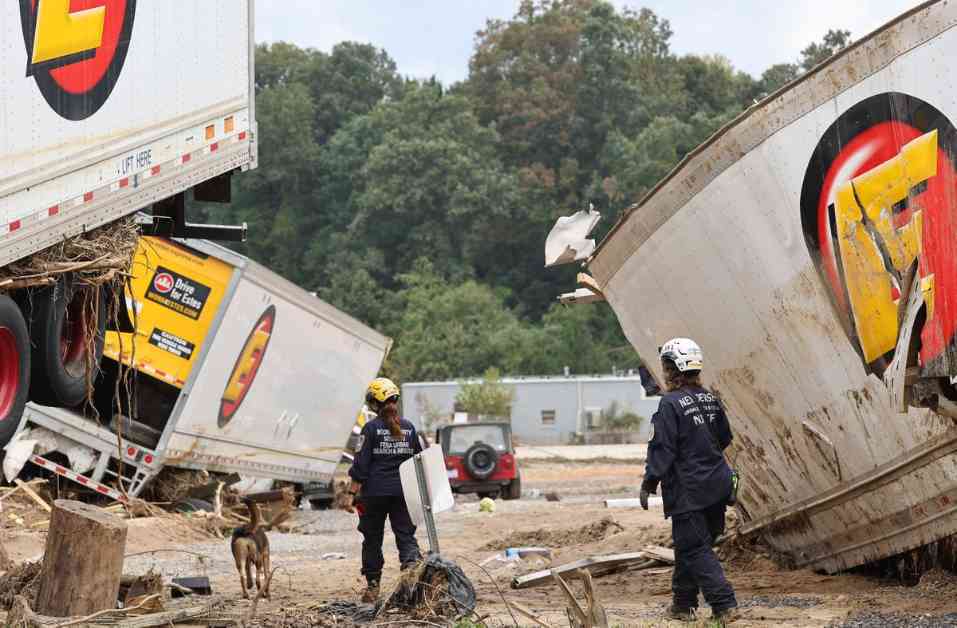Florida is still dealing with the aftermath of Hurricane Milton, the second damaging storm to hit the U.S. Southeast in a short period of time. However, in the midst of recovery efforts, a wave of misinformation is spreading, adding to the challenges faced by those affected. One of the main targets of these false claims is the Federal Emergency Management Agency (FEMA), the organization responsible for coordinating recovery efforts from Hurricanes Milton and Helene. Unfortunately, FEMA has had to create a debunking page to address the numerous harmful and inaccurate rumors circulating.
The misinformation surrounding FEMA has reached such levels that even political figures like Representative Chuck Edwards of North Carolina have had to step in to dispel lies. One particularly outlandish claim was that Hurricane Helene was engineered by the government to access lithium deposits in Chimney Rock, which is completely false. FEMA is not seizing property, preventing evacuations, diverting disaster relief funds, or controlling storms. Despite the facts, conspiracy theories continue to gain traction, with prominent figures like Donald Trump, Elon Musk, and Representative Marjorie Taylor Greene promoting false narratives about the hurricanes and disaster responses.
Disasters often give rise to conspiracy theories due to the uncertainty and fear that accompany such events. When communication systems fail, and official information is lacking, rumors and misinformation can quickly take hold. Emotions play a significant role in the spread of false information, as people seek reassurance and understanding in times of crisis. While fact-checking pages like FEMA’s can provide valuable information, they may not be enough to combat deeply entrenched beliefs fueled by emotion.
In the face of widespread misinformation, experts are exploring new approaches to combat false narratives. One such strategy is “prebunking,” which aims to build immunity to misinformation by educating individuals on common manipulation tactics. Additionally, personalized interventions, such as AI chatbots like DebunkBot, have shown promise in correcting false beliefs. These innovative approaches could be valuable tools for organizations like FEMA in dispelling misinformation and ensuring accurate information reaches those in need.
Misinformation not only complicates disaster response efforts but can also pose a threat to the safety and security of responders and survivors. False rumors can lead to dangerous situations, such as civilian vigilantes setting up roadblocks during evacuations based on unfounded claims. Moreover, the spread of misinformation can deter individuals from seeking necessary assistance, putting their health and well-being at risk. In the case of Hurricane Milton and Helene, misinformation has the potential to prolong recovery efforts and hinder the overall response to the disasters.
As we navigate the challenges posed by misinformation in the wake of natural disasters, it is crucial to prioritize accurate information and critical thinking. By understanding the factors that contribute to the spread of false narratives and adopting innovative approaches to combat misinformation, we can better support disaster response efforts and ensure the safety and well-being of those affected by such events.










